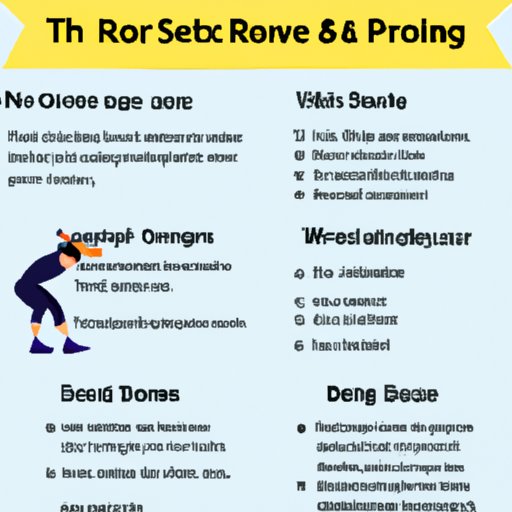Introduction
Working out can be a great way to improve your overall health and well-being. But what if you’re feeling sore or injured? Should you still exercise? The answer depends on the type and severity of your injury, as well as your own pain tolerance. In this article, we will explore the benefits, tips, and alternatives to exercising when sore.
Benefits of Exercising When Sore
Even if you’re feeling sore or injured, there are several benefits to exercising. For starters, exercise can help improve your flexibility and range of motion. It can also increase circulation to the affected area, which can help reduce inflammation and speed up healing. Additionally, exercising can help reduce muscle tension, which can make it easier to move and prevent further injuries.

How to Exercise Safely When Sore
When exercising when sore, it’s important to take precautions to ensure that you don’t aggravate the injury or cause further damage. Start with low-impact exercises, such as walking, swimming, or cycling. Make sure to warm up and cool down properly, as this can help reduce the risk of injury. Additionally, listen to your body and take breaks as needed. Stop immediately if you experience any pain or discomfort.

Best Types of Exercise for Sore Muscles
The best type of exercise for sore muscles depends on the type and severity of the injury. Low impact cardio, such as walking or swimming, can help increase circulation and reduce muscle tension without putting too much strain on the affected area. Stretching can also be beneficial, as it can help improve flexibility and range of motion. Additionally, resistance training can help strengthen the muscles and prevent future injuries.
Tips on Pacing Yourself When Exercising When Sore
When exercising when sore, it’s important to go at your own pace. Start with a low intensity level and gradually increase it as you become more comfortable. Take short breaks as needed to give your body time to rest and recover. Also, avoid pushing yourself too hard, as this can lead to further injury.

What Not to Do When Working Out When Sore
When exercising when sore, there are certain things you should avoid. Don’t push yourself too hard, as this can worsen the injury. Don’t overdo it, as this can lead to exhaustion and burnout. And avoid high impact exercises, such as running or jumping, as these can put too much strain on the affected area.
Alternatives to Exercise When You’re Sore
If you’re feeling too sore or injured to exercise, there are still ways to manage your pain. Massage can help reduce muscle tension and improve circulation. Heat therapy can also be beneficial, as it can help reduce inflammation and relax the muscles. Foam rolling can also be helpful, as it can help release knots and tension in the muscles.
How to Recover After a Workout When You’re Sore
After a workout, it’s important to give your body time to rest and recover. Make sure to get enough sleep and eat a nutrient-dense diet. Additionally, make sure to stay hydrated with plenty of water. Finally, consider taking an ice bath or using an ice pack to reduce inflammation and soreness.
Conclusion
Exercising when sore can have numerous benefits, such as improved flexibility and circulation. However, it is important to understand how to exercise safely and what types of exercises are best for sore muscles. Alternatives to exercise, such as massage, heat therapy, and foam rolling, can also be beneficial. Lastly, remember to always listen to your body and take breaks as needed.


